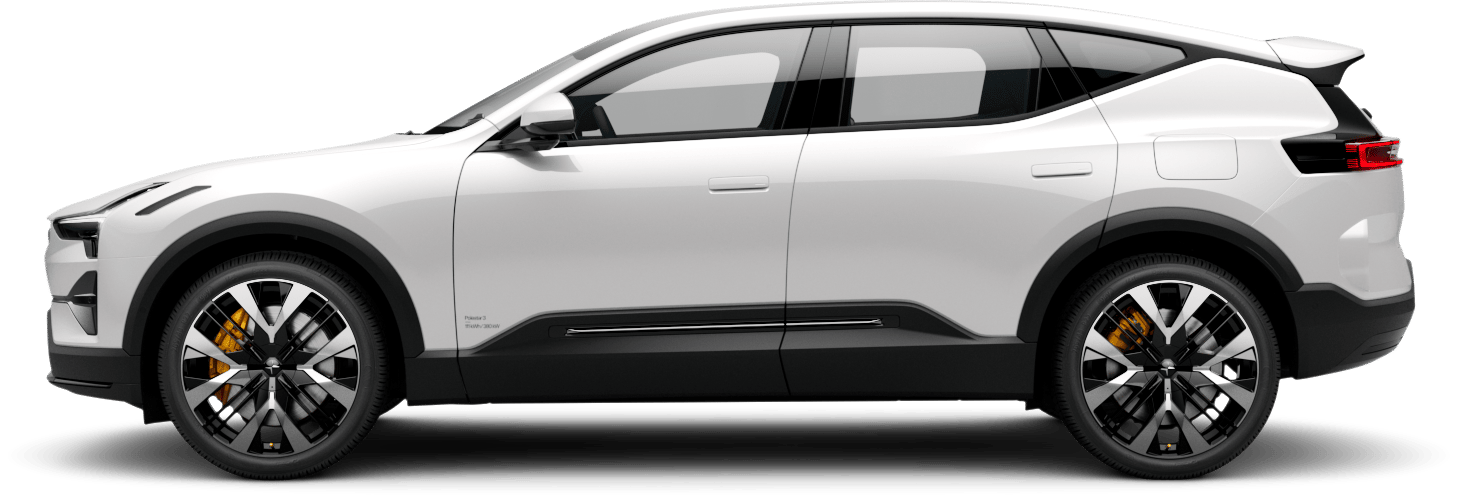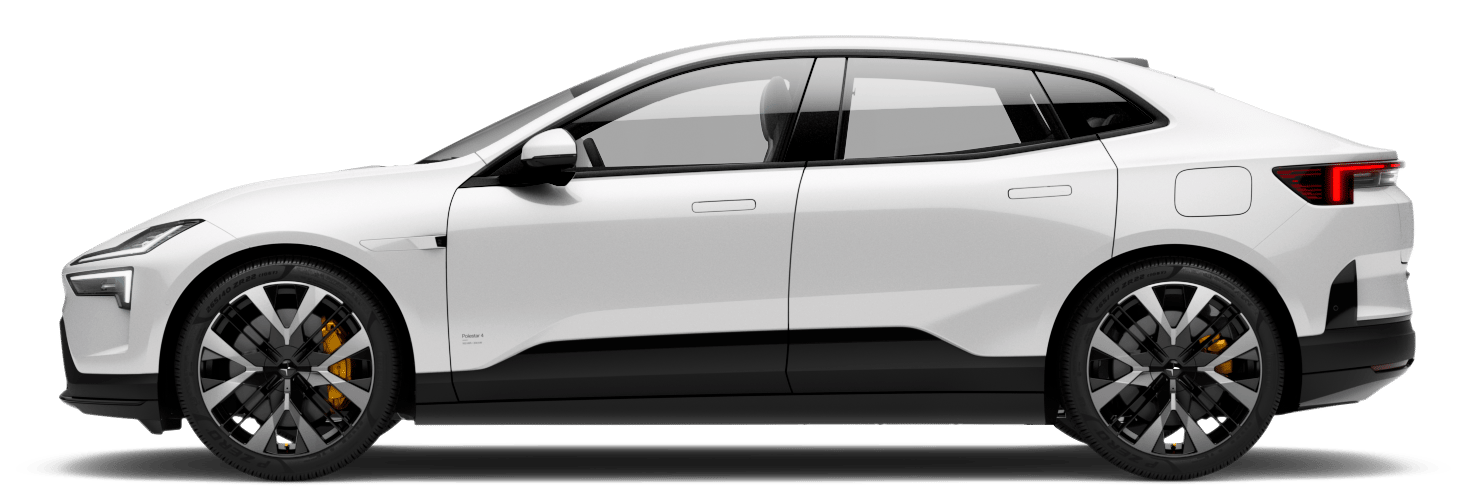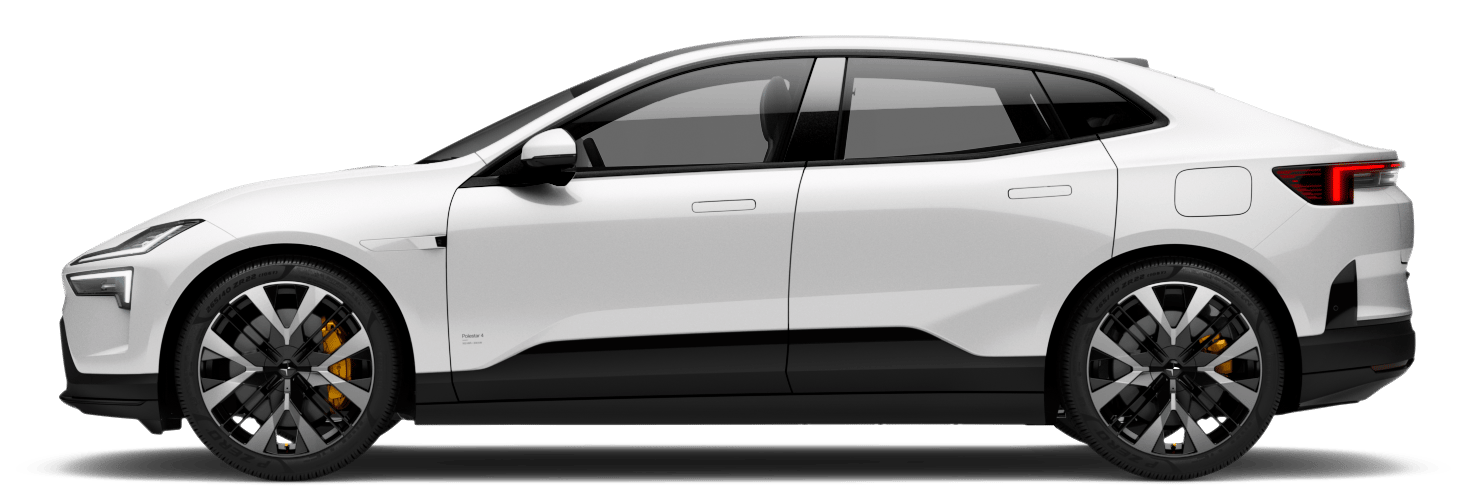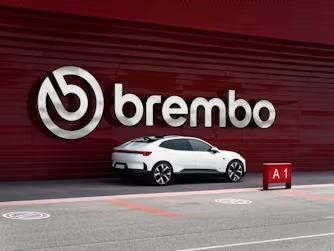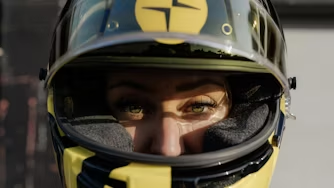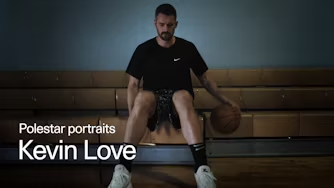A peek under the parachute: Polestar 4 Sightings, behind the scenes
Show speed. And show it in a non-traditional way.
It was no longer a 3D visualization, or a static car on a stage. (Polestar 4) was coming to real-life roads.
As far as briefs go, this deceptively complex one was right in Polestar’s wheelhouse. Convey a characteristic long associated with cars. While you’re at it, do it in a way that hasn’t been done before. “Our Head of Brand, Pär Heyden, had this idea of using a large piece of fabric which would then be torn off the car at speed,” relates Art Director Martin Victorin, one of the in-house, on-set creatives/fabric wranglers behind the production now known as Sightings. “So, the team sat down to determine how, and why, there’d be a large piece of fabric on Polestar 4 in the first place.”
The challenge of context
This idea presented a unique challenge. The car had already been revealed; the public got their first look at the performance SUV coupé on a plinth, surrounded by 90,000 tulips, at Auto Shanghai 2023. The shaking loose of this fabric would have to be less “car show reveal” and more “electric performance unleashed”.
“We wanted to tell the world that this highly anticipated car was about to arrive,” continues Victorin. “It was no longer a 3D visualization, or a static car on a stage. It was coming to real-life roads.” Polestar 4 was about to make its grand entrance, in other words. And there’s nothing especially dramatic about arriving on a truck or a cargo ship (no offence, vital modes of international transportation).
What if Polestar 4 arrived from space?
“Our brand’s name is Polestar, after all,” grins Victorin, noting that while we’ve long taken inspiration from the cosmos, we’ve never played with the idea of having extraterrestrial origins. And thus, a solution came about that allowed for a visually compelling arrival while also contextualizing the all-important fabric.
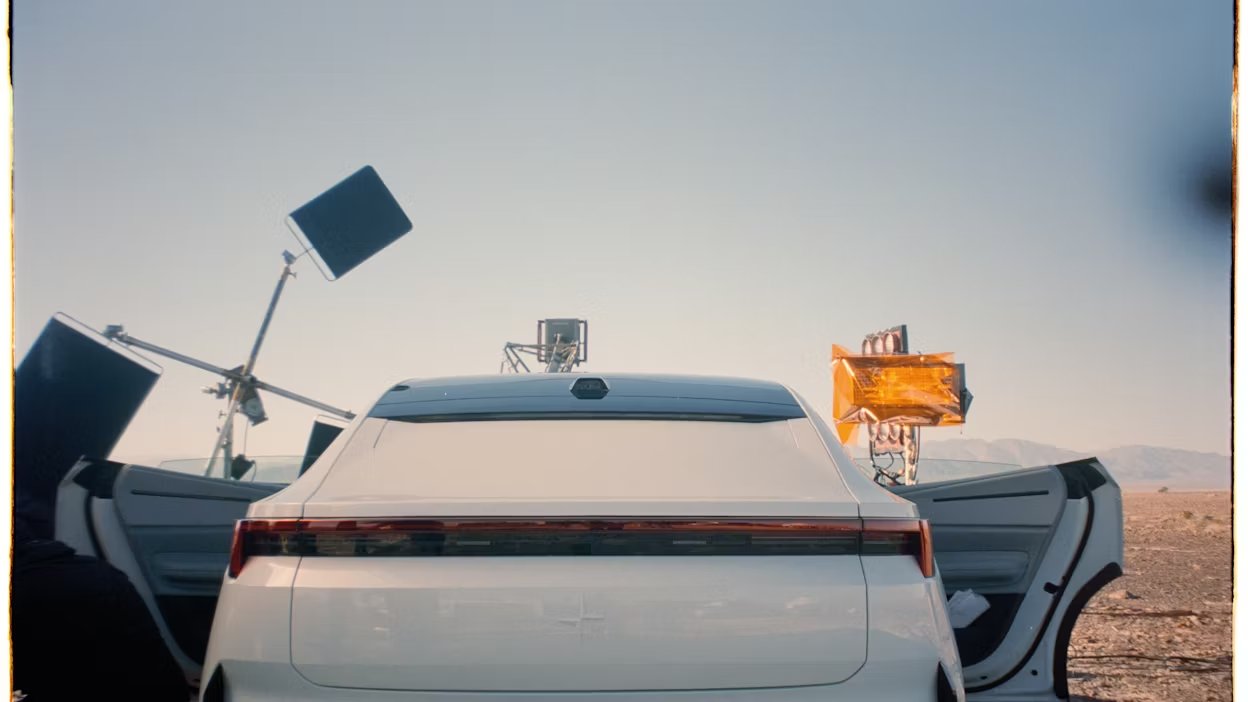
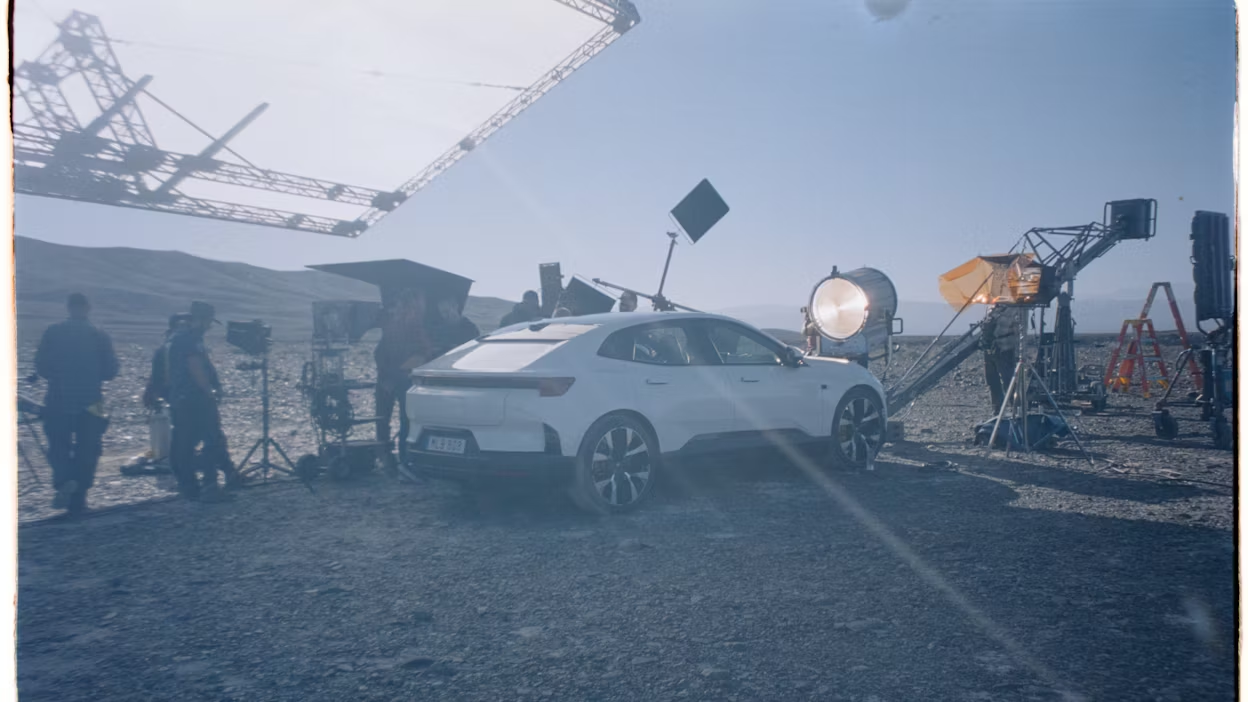
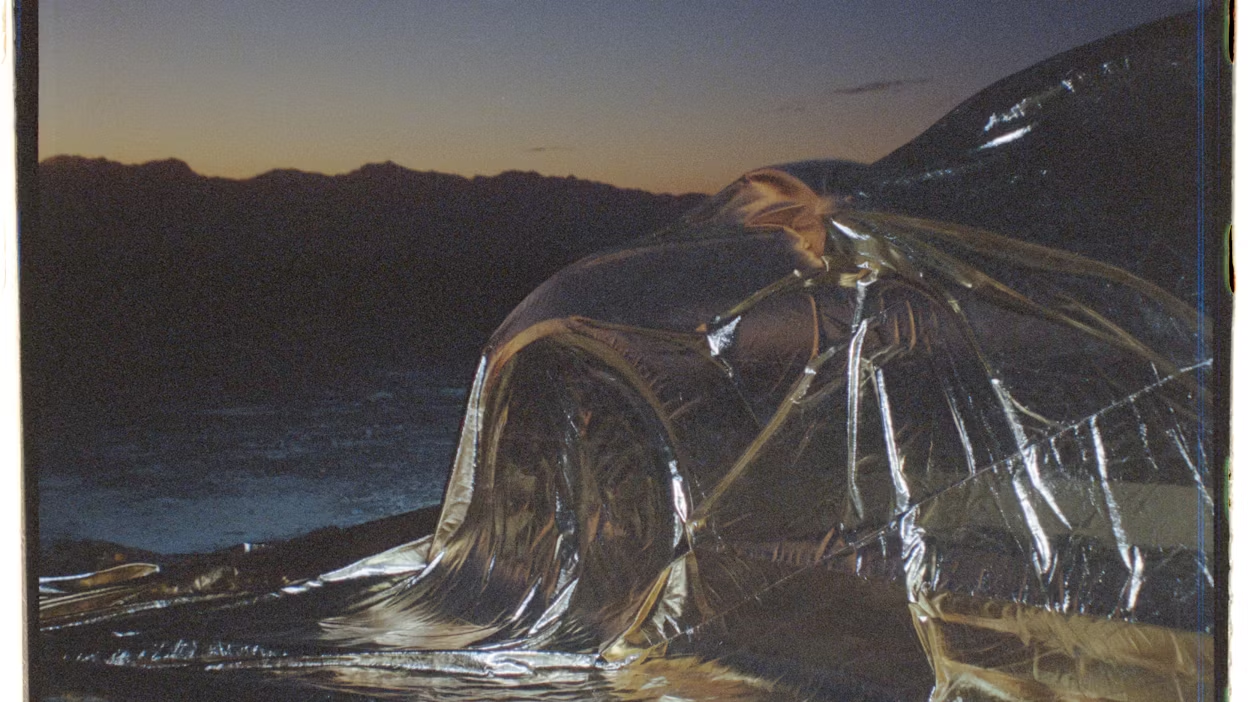
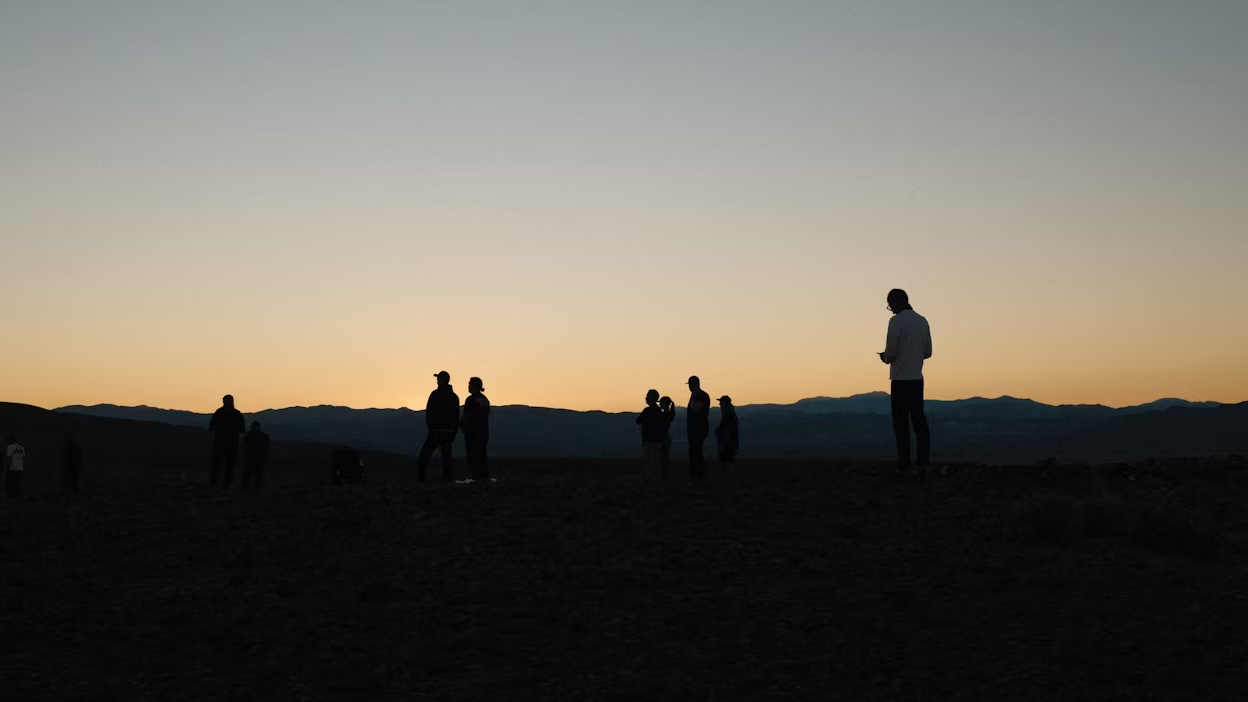
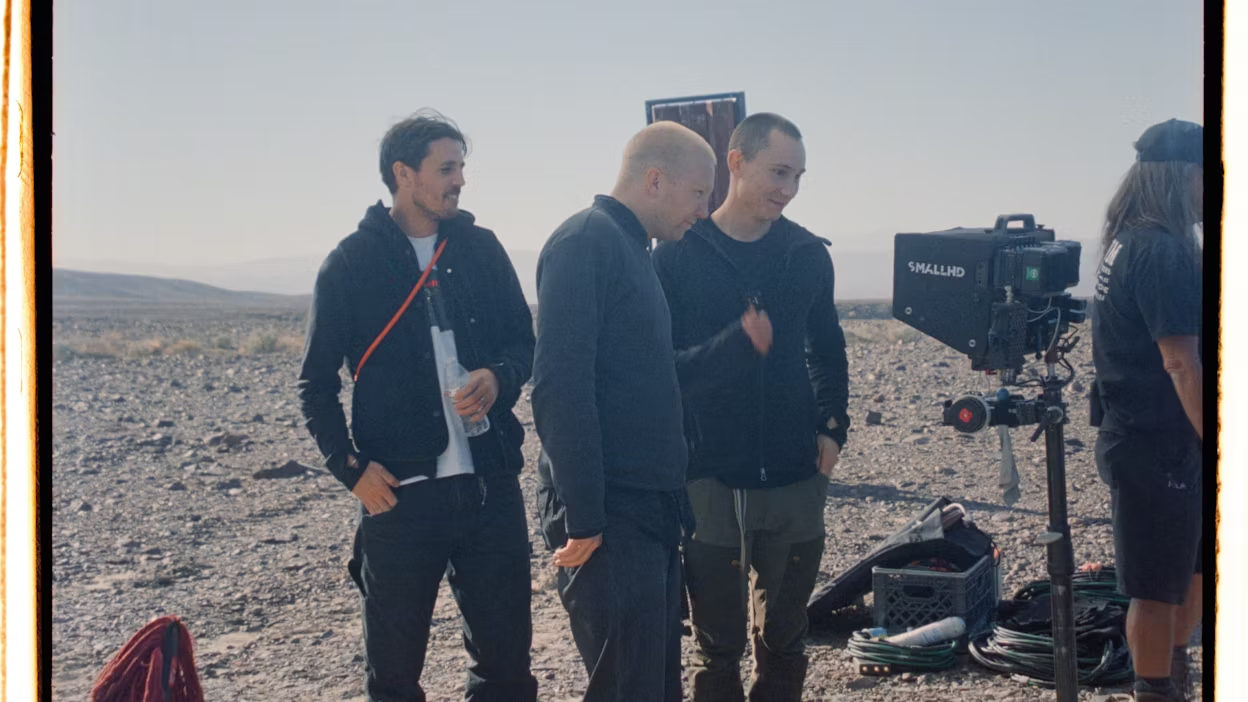





01/05
When the wind picked up...the fabric stuck to the car in a way that looked amazing on film.
Location, location, location
This angle, what essentially amounts to a UFO encounter, made the desert the most natural setting; connections between the desert and alien craft range from the Roswell Incident of the ‘40s to Area 51 of the present day. Furthermore, the desert is in and of itself an otherworldly place, with its limited color palette and extreme landscape.
A voiceover from the perspective of a witness, given life by Swedish-American musician Rhys Clarstedt, completes the narrative. “We always had a story in mind,” relates Director Daniel Lidén. “But that story was entirely visual. The location, the incorporation of the parachute, even the music, it was a self-contained idea. But the voiceover added another layer.”
Wind, weather, and worry
Every production is demanding in one way or another. Shooting in such an inhospitable location as the desert presents even more hurdles. “You’re always nervous beforehand,” continues Lidén. “Especially when you’re in the outdoors, in an environment which is essentially out of your control.”
There are the elements. There are the light conditions. And in this case, there’s an enormous parachute, never the easiest of objects to control. Luckily, the wind proved to be an asset, creating some of the most iconic shots of the entire film.
“We were prepared for the wind, as we were shooting in a valley between two mountain ranges,” states Lidén. “We thought we’d have to weigh it down to prevent it flying away. But when the wind picked up, the opposite occurred. The fabric stuck to the car in a way that looked amazing on film.”
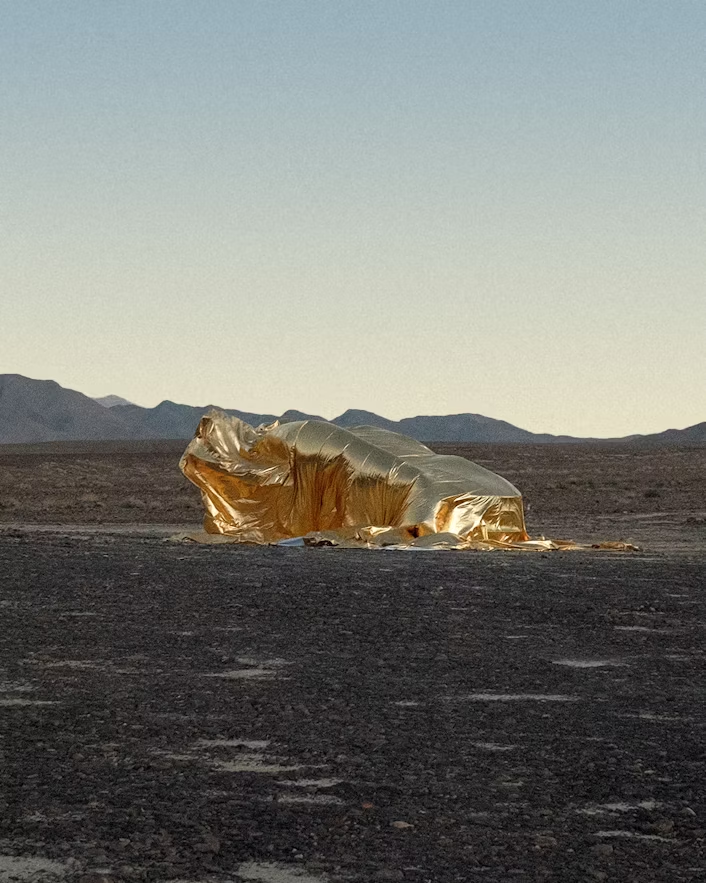
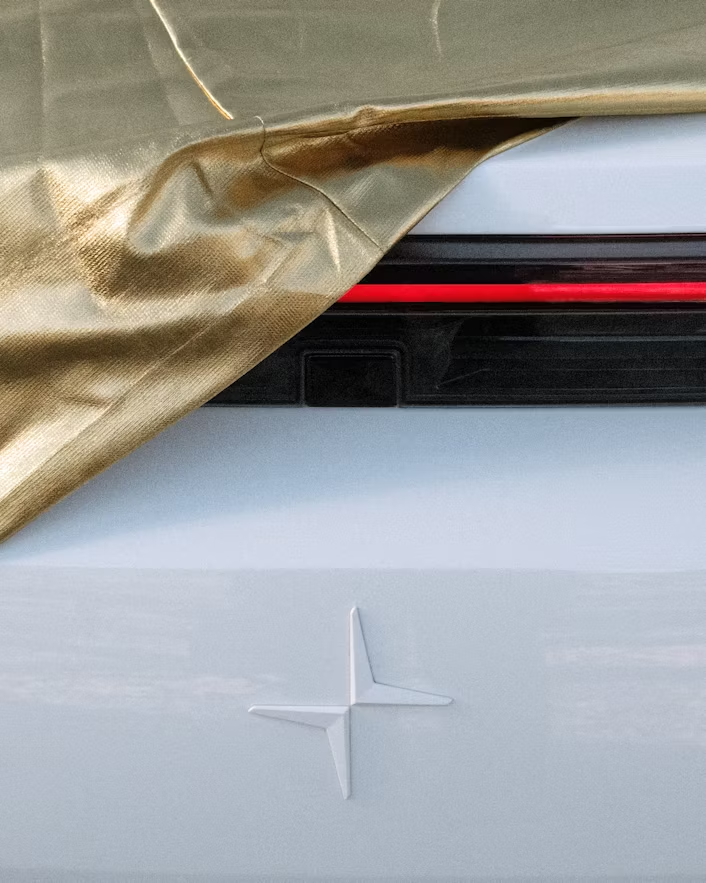
Experiments and results
In many ways, the entire production was unknown territory. New environment, new practical effects, new car. Fitting, given that deserts have played host to multiple experiments throughout the years, though this one favored hoodies over lab coats. And within this new approach, others were tried. Specifically, involving cameras.
“Everything felt worth documenting, so I never stopped rolling,” laughs Julia Freiman, a video editor and photographer acting as creative support for the production. “I had six or seven cameras with me wherever we went. Switching between my fun little ‘dad-cam’ (Sony Handycam HDR-CX405) and taking some snapshots with my analog point and shoot (Minolta Zoom 35 mm), together with a Fujifilm x100v crossbody, while carrying my heavy rig for my Bmpcc 6k pro and dragging my pelican hard case, made me look like a pack mule in the desert. But I love combining different film and photography styles. The creative freedom you have with it is always so exciting.”
Seized by the creative (and physical) freedom afforded by the desert, the team set out to show speed. To show it in a non-traditional way. And in doing so, to create something otherworldly.

